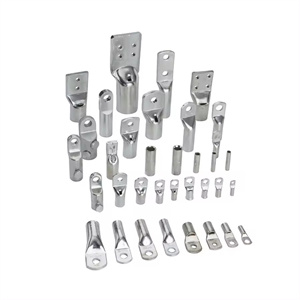Choosing the appropriate connector is a process that requires considering multiple factors.
1. Application requirements: Firstly, you need to clarify the usage scenarios and requirements of the terminal connector. For example, the number of signals you need to connect, current rating, working voltage, working environment, etc. These factors will directly affect the terminal connector type, specifications, and performance you choose.
2. Environmental conditions: Consider the environmental conditions in which the connector will operate, such as temperature, humidity, salt spray, vibration, and impact. These environmental factors can affect the stability and reliability of terminal connector , so you need to choose a terminal connector that can work properly under these conditions.
3. Physical characteristics and electrical performance: Pay attention to the physical characteristics and electrical performance of the connector, such as the number of pins, pin spacing, maximum current, contact resistance, insulation resistance, and electrical strength. These characteristics will directly affect the transmission efficiency and stability of the terminal connector .
4. Reliability: The reliability of terminal connector is crucial, especially in critical application scenarios. Choose connectors with excellent stability and durability to reduce the likelihood of malfunctions and repairs.
5. Easy installation and maintenance: Consider the convenience of terminal connector installation and maintenance. Choosing connectors that are easy to install and disassemble can save time and labor costs. At the same time, consider the interchangeability and standardization of connectors for future maintenance and upgrades.
6. Cost effectiveness: Consider the cost-effectiveness of connectors while meeting application requirements. Choosing terminal connector with high cost-effectiveness can help reduce overall project costs.
Electrical Cable Lugs is an important component used for connection between cables and equipment or between cables in electrical connection. They are usually made of conductive materials, such as copper, aluminum, or copper-aluminum alloys, and are subjected to specific processes, such as tin plating, crimping, etc., to ensure good conductivity and bond strength. The following is a detailed description of Electrical Cable Lugs:
Electrical Cable Lugs can be divided into pure copper cable lugs and copper-aluminum alloy cable lugs according to different materials. The pure copper cable lug has good conductivity and corrosion resistance, while the copper-aluminum alloy cable lug combines the advantages of copper and aluminum, with better comprehensive performance. In addition, special materials such as stainless steel cable lugs are available for electrical connections in specific environments.
Electrical Cable Lugs usually consists of the following parts:
Conductor part: connected with cable conductor to ensure smooth current flow.
Crimping part: the crimping process is closely combined with the cable conductor to form a reliable electrical connection.
Insulated part (part of product): for the occasion requiring insulation, the cable connection nose will be designed with insulation layer to prevent electrical leakage and short circuit.
Electrical Cable Lugs features include:
Good conductivity: made of high-quality conductive materials to ensure current transmission efficiency.
Reliable connection: close connection with cable conductor through crimping and other processes to form stable electrical connection.
Strong corrosion resistance: after special treatment, it has good corrosion resistance and is applicable to various harsh environments.
Easy installation: reasonable design, easy and fast installation, and improved work efficiency
